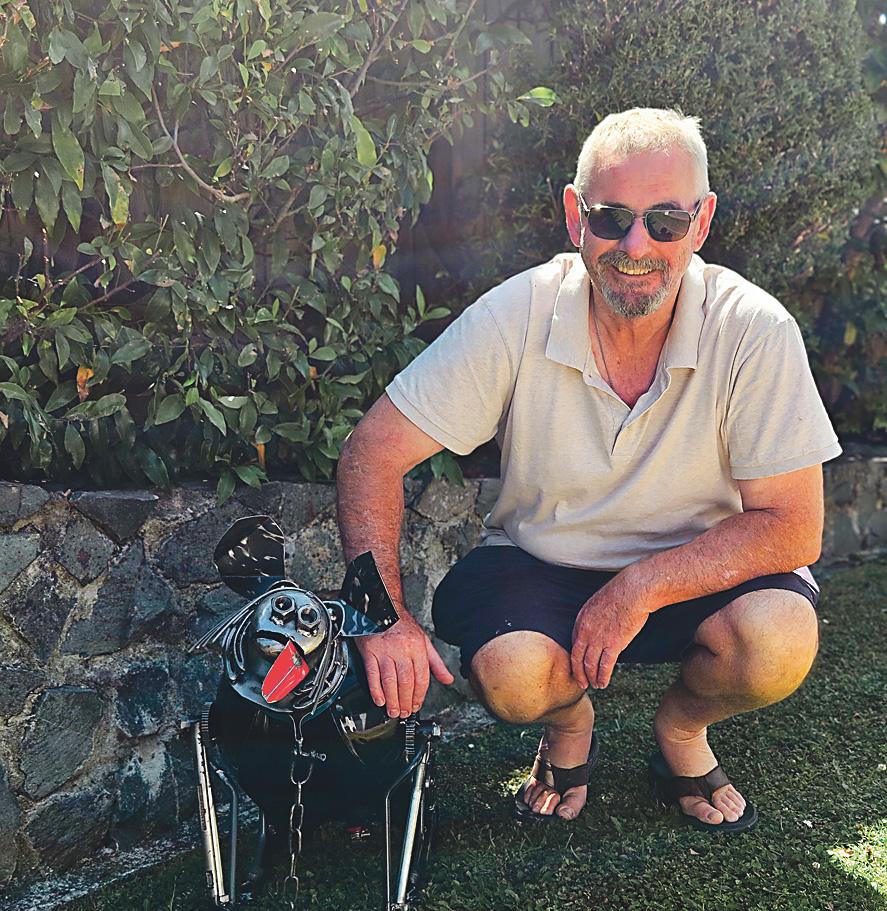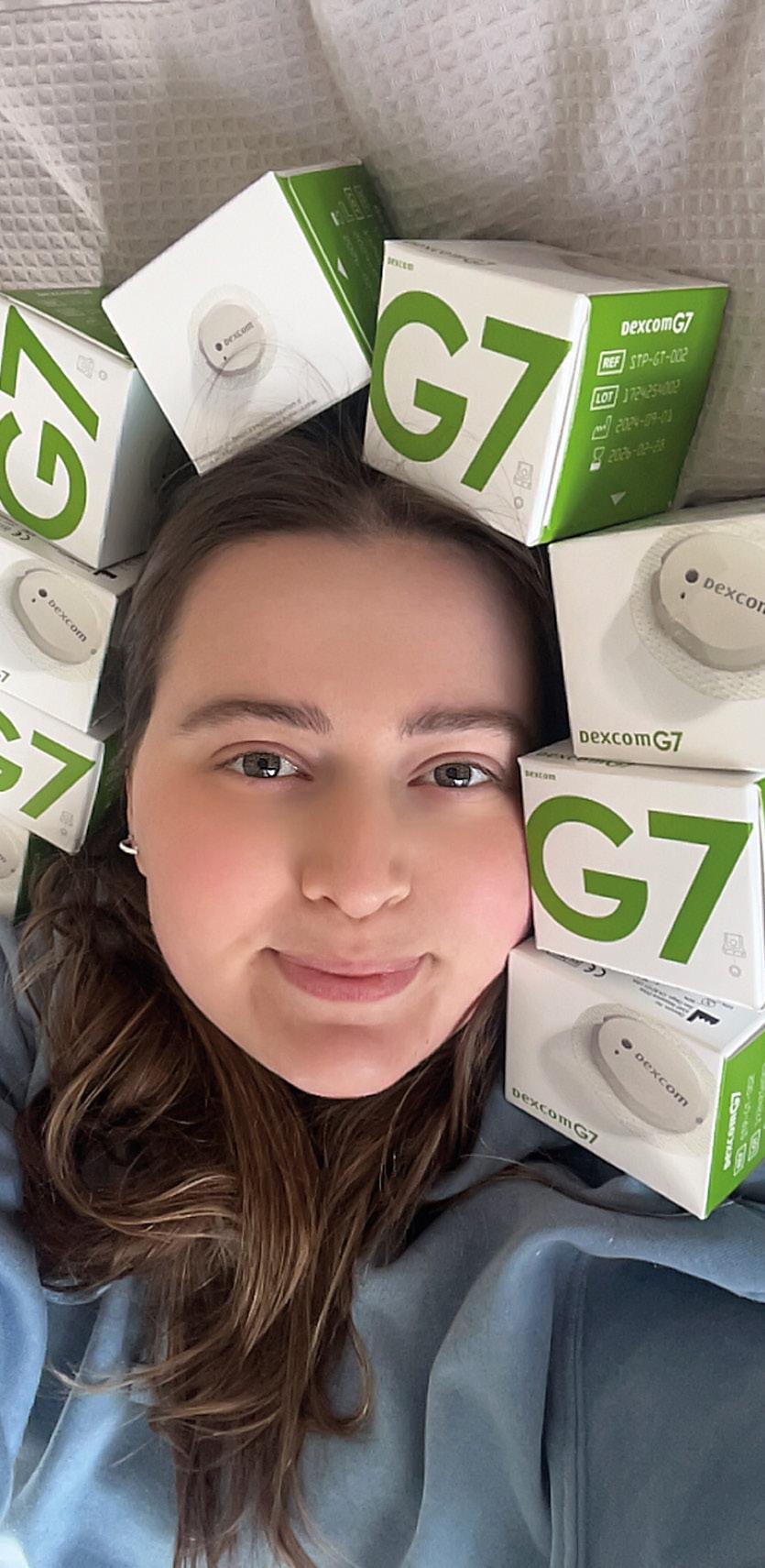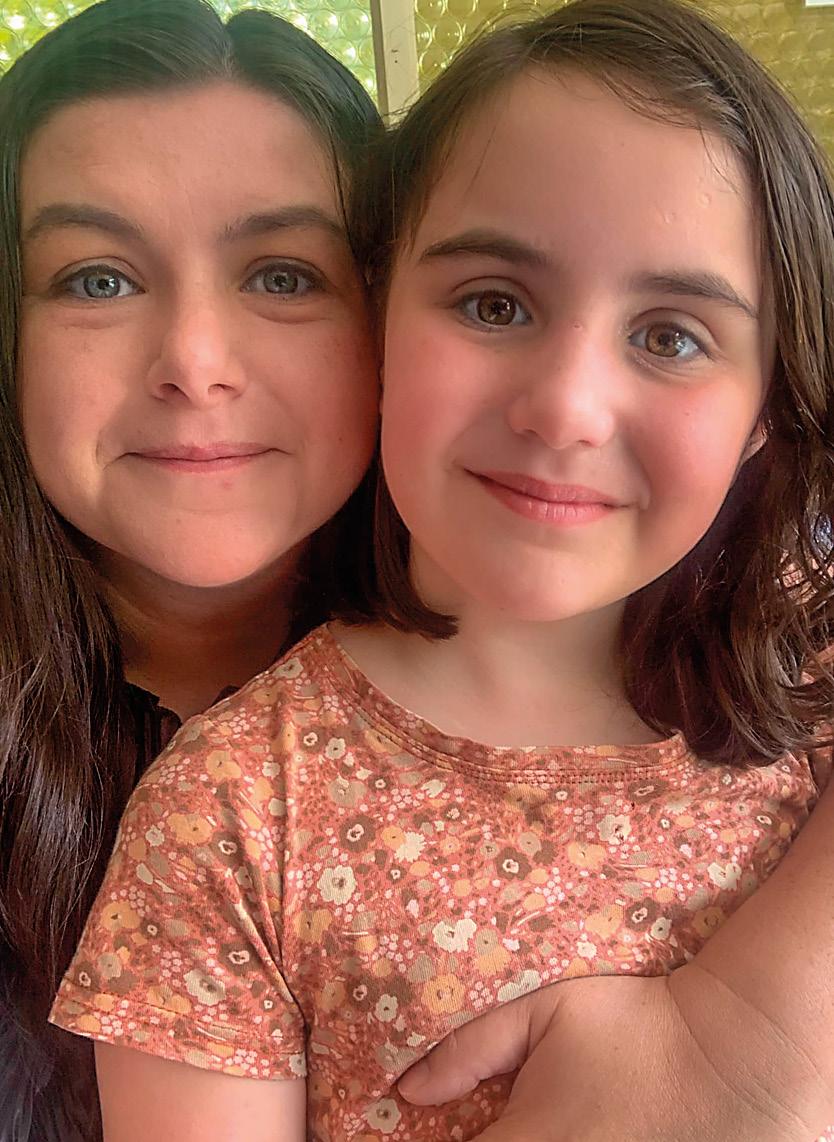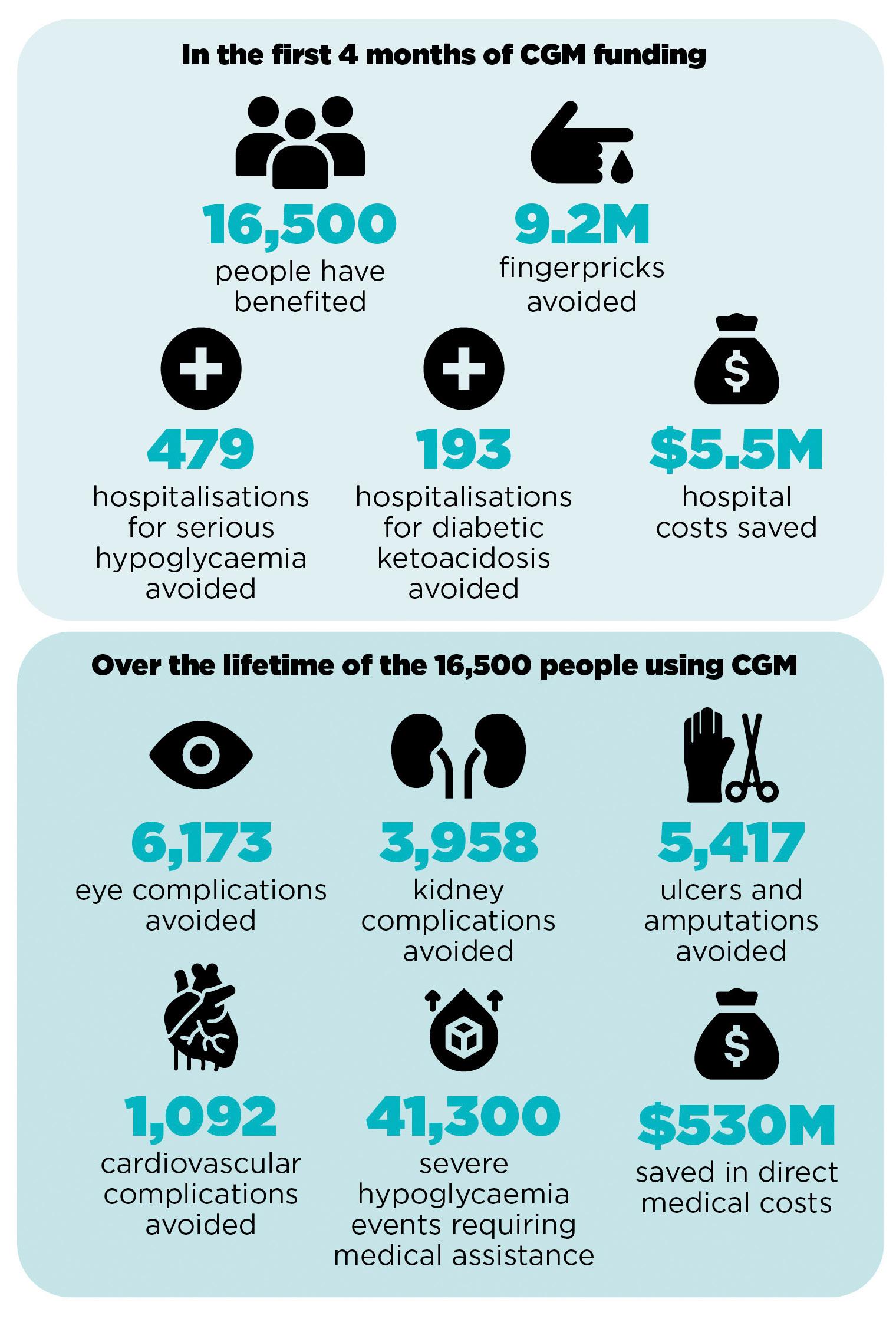
8 minute read
CGMs Five months on
Five months after Pharmac signed off on funding Continuous Glucose Monitors for those with type 1 diabetes, we asked the community how the last few months have been.
AN IDF YOUNG LEADER
Twenty-seven-year-old Laura Snowden says, when she first heard that that CGMs were finally being funded, it didn’t feel real to her. Even though people had been talking about it for years, she says she couldn’t imagine it becoming a reality. ‘When I heard the news, I was at work. I cried happy tears, I was so overwhelmed.’
Laura says her chat group of fellow youth leader volunteers suddenly lit up once the news was out. ‘They were all suddenly on the chat, sending screenshots and going omg they’re funded! Everyone was really excited.’
Laura is an International Diabetes Federation (IDF) Young Leader in Diabetes and represented Aotearoa New Zealand at the Training Summit for Young Leaders during the most recent IDF biennial forum in Portugal. Laura has been invited back to be a speaker at the next one, which is in Bangkok in April.
Having an expensive lifeenhancing device funded now means Laura has the ability to save money, but for her it offers more than that. ‘It has a hundred percent improved my mental health. I don’t feel so constantly anxious about my readings or having to monitor my diabetes more closely as I now have tech that I know can help me out, especially overnight.’
Laura admits that, before she went on funded sensors, she was extending them, which is advised against due to the real possibility of infection. ‘I was reusing the same sensors. But now I don’t have to worry about that. I just put on a new one when I’m meant to.’ Another relief of having her CGMs funded is when it doesn’t read properly, she doesn’t panic. ‘I used to worry, thinking I can’t afford another one and then having to wait for the next one. Now I have a drawer full of them which is just crazy.’ Laura remembers picking up her first funded prescription from her pharmacy and feeling like a millionaire as she carried a thousand dollars’ worth of the life-improving medication out the door.
While she is being funded to travel to the next IDF in Bangkok, Laura is excited to now be able to save for other travel that she has long wanted. Spending an average of $400 a month before CGMs were funded, Laura now has the ability to contribute to her savings account. ‘Before, I was making the decision, do I travel without sensors? Or not travel and have sensors? Now I can travel and know I have stuff to carry me through, which is great.’
After graduating and working in pharmacy, Laura has returned to study and is half way through a Masters in Professional Accounting, with less than a year to go. She studies part time while working in administration. Considering and planning how to afford her CGMs used to be always front of her mind. ‘When I careerchanged, I considered how am I going to go from working fulltime to being a student again, part-time? And how am I going to afford my sensors? So this is one less stress,’ she says. ‘I don’t have to work so many crazy hours while also studying.
‘We’re a very forgotten age group. Half of us get our CGMs paid for by parents, but a lot of us don’t. So, we’re trying to study and fund ourselves. But not anymore!’

I would say that, prior to them being funded, I actually wasn’t using them fulltime for long. My HbA1c is finally down to 43 due to sensors, when it used to be in the 70s, so I would say that’s a significant health improvement for sure since I can now afford them 24/7. – Laura
A PARENT
Before CGMs were funded for seven-year-old Freya, her mum, Claire Campbell would ‘measure’ everyday things and experiences in ‘CGMs’. (She used the brand name, but for clarity and fairness we’ll just call them CGMs.) Claire explains: ‘I would compare the cost of everything to a CGM. Our friends would complain about the cost of things like their car loan payment or childcare cost, and I would think to myself, well it’s cheaper than a CGM! Our fridge broke, and the cost of a new fridge was three months of CGM. I wouldn’t want to buy myself anything because the thought of how many CGMs I could buy for the same price.’
When Claire picked up her first package of funded sensors, she says she cried with happiness. ‘I think I cried because I realised I was so relieved of the financial strain. The constant hustle to afford CGMs was finally over, and no-one else, other than type 1s, actually knew how financially draining funding CGMs was.’

A RETIRED FARM MANAGER
For 66-year-old Phil McKinnon, the announcement that they would be funded couldn’t come soon enough for the Hamiltonian. Eighteen months ago, he was offered a month’s trial, and he thought, why not? ‘Of course, that’s a fatal mistake. Once I’d used it, I didn’t want to give them up,’ he says. ‘But I couldn’t believe the difference it made. It was like a fog had been lifted from my brain. Totally unbelievable. I was not aware what that higher glucose was doing to me. I still have lows, but I don’t have those extremes.’
Lately retired, Phil was a farm operations manager, working in the artificial breeding industry. ‘So I was getting to the stage in my head where I had to decide that if I hadn’t been funded whether I’d continue with them or not because it was so much money each month. But I didn’t want to stop using them either.’
Phil was first diagnosed with type 2 diabetes after he contracted pancreatitis 13 years ago. About three years ago, his diabetes doctor started classing him as type 1 as he wasn’t producing any insulin at all. Phil says no-one knew what caused his pancreatitis until they removed his gall bladder. ‘You know how you get gall stones? Well, mine was filled with sand and they couldn’t see it with scans, and that’s what caused it.’
Phil celebrated when he heard CGMs were being funded and that day went out and bought a bottle of bubbles.
Phil is enjoying not having to fork out a lot of money for a sensor that helps keep his blood sugars stable. ‘You become so reliant on it that I don’t know if I would’ve been able to stop buying it because it’s made a massive difference to me. Not having to pay for it has been brilliant.’
Although his career was rurally centred, Phil has been a townie for quite some time, living in Kirikiriroa Hamilton. A year after officially retiring, he still picks up some seasonal work when needed. On one occasion, Phil was at a job when his CGM alarm went off. He was sucking back a gel pack when another seasonal worker came up to him and asked him if this was breakfast? ‘I said, “no”. She said, “do you have diabetes?” And I said, “yeah”. So her granddaughter has diabetes. And obviously it’s made a huge difference to them too, to not have to pay for the bloody things anymore.’
Phil adds that he is very thankful to all those who made the funding possible and throws in a shout-out to the wonderful diabetes team at Waitematā District Health Board. ‘They’re simply the best.’

THE STATS SPEAK FOR THEMSELVES
It’s obvious – the benefits of funding CGMs are massive. The gains of these devices cannot be anything but significant in terms of both health and economic outcomes.
As expected, the initial roll out has been hugely successful. In the first four months of funding, 16,500 have benefited from funded access to CGMs. According to data and modelling provided by Dexcon, they report that the first four months of funding has collectively saved the health system over $3.1 million, allowing hospital resources and paramedic call-outs to be freed up and allocated elsewhere.
Stretching that out over an average life time shows the use of CGMs will save millions of tax payer dollars, as well as make a gain of 24,552 quality-adjusted life years for the more than 16,500 people using CGMs over their lifetime.
Thanks to the funding by Pharmac, we will have significantly fewer hospitalisations for serious hypoglycaemia and diabetic ketoacidosis, as well as major complications such as amputations.











